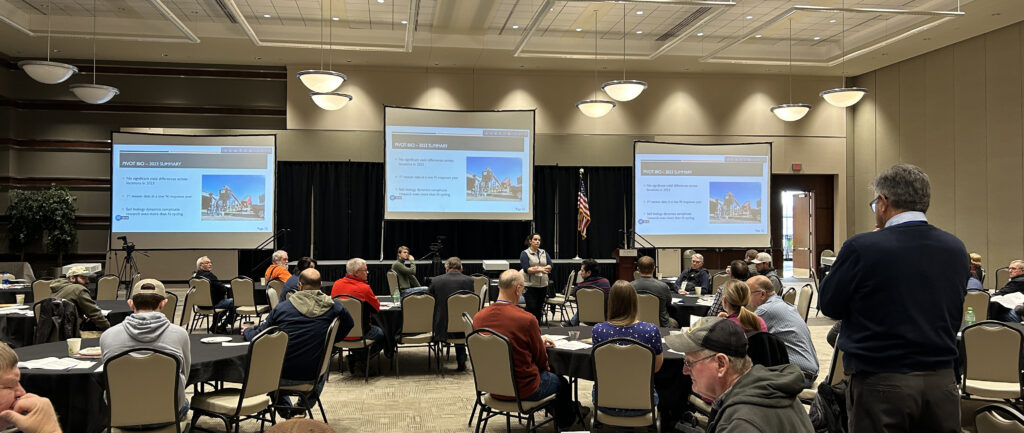“Don’t Let Those Sheets Touch the Grass!!” words I heard my mama yell as the teenage me hung out laundry.
Last week we discussed vapor drift. Physical drift, also known as particle drift, is the movement of the sprayer droplets away from the target area. It is surprising how sheets drying in the sun and herbicide drift are related. We have all witnessed the show around the nozzle with sunlight dancing in the mist. But have you considered how droplets moves? Multiple factors affect particle movement, but the two most important are droplet size and air movement.

Droplet size is largely a function of choices by the applicator. Nozzle type, size, sprayer pressure, boom height and sprayer speed are all choices made by the applicator affecting droplet characteristics. The primary issue is droplet size (Table 1). The larger the droplet, the faster it falls and the sooner it hits the target. A 5 micron (fog) diameter droplet takes 66 minutes to drop 10 feet in no wind while a 1000 micron droplet (fine rain) covers the same distance in 1 second. In a 3 mph wind, that 5 micron droplet would travel 3 miles; the 1000 micron droplet travels 4.7 feet. It becomes obvious which one will be off target.
Droplet size selection affects many pesticide efficiency issues, but increased droplet size is one of the primary ways an applicator can control drift. By including drift potential as one of the decision making criteria for herbicide applications, applicators can help better manage potential pesticide drift.
Droplet size can, and will, change as it drops. The various forces affecting evaporation may decrease droplet size dramatically. The primary factors are relative humidity, ambient temperature and distance traveled. Anyone who has hung out wet sheets knows increased temperature with decreased relative humidity will increase evaporation rate, thus drying the sheets faster.
The same process will decrease droplet size. By increasing the distance traveled, usually regulated by boom height, the applicator increases time for the falling droplets to evaporate resulting in decreased droplet size.
As the droplet falls it moves downward but also moves with the wind. Read the label to determine proper application procedures. Current Extension recommendations are to apply herbicides with wind speeds between 3-10 mph. Wind speeds greater than 15 mph can cause dramatic drift issues.
If you have watched laundry dance on the line, then you see winds gust. One also has to consider wind gusts and sprayer speed. Minnesota seldom has a consistent wind speed, and gusts above 15 mph are common. When driving into the wind, the wind speed and sprayer speed are cumulative. An 8 mph wind plus an 8 mph sprayer results in a wind speed of 16 mph contributing to drift.
Obviously, wind can dictate the direction the droplet travels, but temperature inversions are also a factor. Wind speeds lower than 3 mph are indicative of an eminent temperature inversion. Such an inversion will actually lift the droplet above the sprayer boom and lead to potential greater drift distance.
Know your fields and the crops in the adjoining fields. Try to apply herbicides when wind direction is away from sensitive crops and be aware of changing winds and weather conditions. If the wind is favorable, apply herbicide to drift susceptible areas first (buffer edge, etc.), and increase the distance from sensitive crops before the wind changes. You can’t stop drift, but you can manage it. I wonder if those sheets are dry yet.
David Kee is Director of Research at Minnesota Soybean. Contact him at david@mnsoybean.com or at 888-896-9678.
Tags: drift, herbicide






